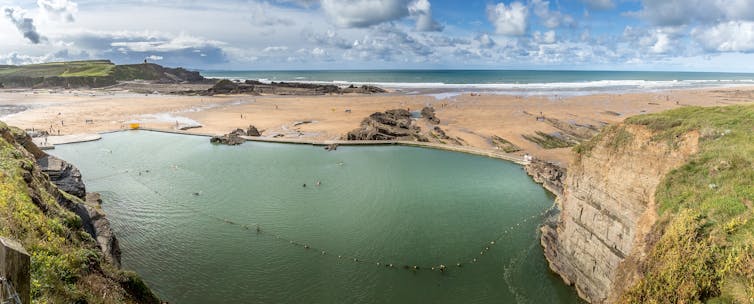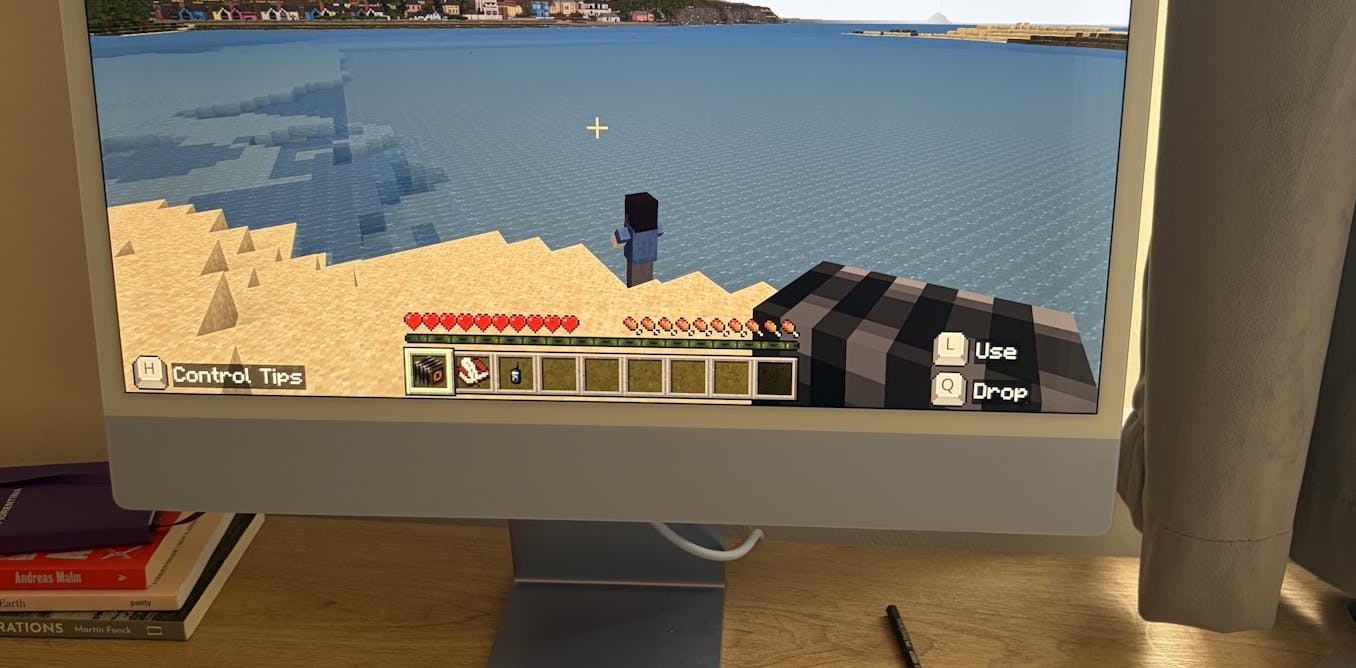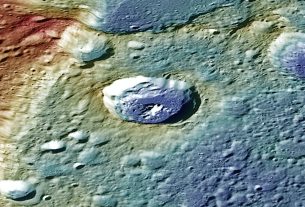A new version of Minecraft aims to teach students about coastal erosion, flood resilience and climate adaptation, and shows how children can use computer games to learn about complex situations.
CoastCraft is a new custom world from the educational arm of the Minecraft team that can be downloaded and added to the game. It is set in the seaside town of Bude, Cornwall, and players attempt to protect the coastal landscape from the various effects associated with sea-level rises and climate change. The game takes about an hour or two to complete.
Bude is experiencing increasing coastal erosion and the project was developed in conjunction with the UK Environmental Agency and Cornwall Council as part of a £200 million flood and coastal erosion innovation programme.
In the game, students use animations to help them understand coastal erosion and rising sea levels before being able to explore and engage with a range of coastal management strategies (including relocating key infrastructure, using nature-based solutions such as plants, or potentially doing nothing at all).
I played the game for a few hours and found that the mechanics of Minecraft lent themselves very well to understanding the principles of environmental management.
If you do a bad job, the sea encroaches on the terrain and certain infrastructure is lost (for instance, a car park or toilets). These dynamics add to the immersive experience of the game. They also really nail the realities of future climate change in a way that is potentially far more relevant and digestible than scientific models and projections.
In making the decisions, you get to move around the map to chat with key people about the potential impact of going ahead with a decision and any other factors. You are limited by how much you can spend. Some decisions, like relocating the lifeguard hut, are very expensive (costing 75% of your total funds), while nature-based management, such as sand dune protection, costs nothing. Through this players are actively introduced to decision-making and the implications of their actions.
Throughout the game, there is a major emphasis on balancing the economic, social and environmental impact. You are able to fast-forward to 2040 and then again to 2060 to see what your decision-making looks like down the line.
After each round, you are sent back to a roundtable of NPCs (non-playing characters) who scrutinise your decisions before revealing a sustainability score on how well you managed to reconcile the competing economic, societal and environmental demands. Once you have finished the game, you can return to the main base and also chat to NPCs about different careers in coastal management.
At the University of East Anglia my team ran a series of workshops with staff and students from different disciplines to help establish what and how climate change should be taught (see figure below).
We suggest that teachers should try to include a range of skills into their curriculum design and planning (see image above) to help students understand the multiple ways in which the challenges of climate change can be managed. CoastCraft is an excellent example of this.
In this game students are in an immersive, digital experience that not only provides basic scientific knowledge but also introduces the idea that choices around environmental management have multiple outcomes that need to be anticipated. It shows that the balance between the environment, economy and society is a fragile one needing attention. Research found involving students in role-playing activities (in that case a pretend climate summit) could help them to understand the realities and politics of decision-making.
Making decisions
In CoastCraft, the experience of getting students to actively engage with decisions and trade-offs, deciding what forms of expertise to listen to or base decisions on, and then getting to witness how decisions affect the future can also be important in helping students understand the politics and challenges of local climate change adaptation.
Games can be used as a teaching method to convey complex environmental stories and immerse students in situations they may not otherwise have access to.

Chris276644/Shutterstock
Recently, educational charity Students Organising for Sustainability found that only 22% of respondents felt that children and young people were prepared for climate change through their education. Anecdotally, I’ve had multiple students tell me that they want to learn about how to help solve the problem of climate and sustainability, not simply find out about why it is happening.
CoastCraft has managed to capture the politics of coastal management in an immersive experience. This is an impressive achievement, showing gameplay can be relevant and educational and still fun.
Don’t have time to read about climate change as much as you’d like?
Get a weekly roundup in your inbox instead. Every Wednesday, The Conversation’s environment editor writes Imagine, a short email that goes a little deeper into just one climate issue. Join the 45,000+ readers who’ve subscribed so far.
![]()
Elliot Honeybun-Arnolda receives funding from Natural England for work associated with the Public Engagement Laboratory for Nature and Society.



